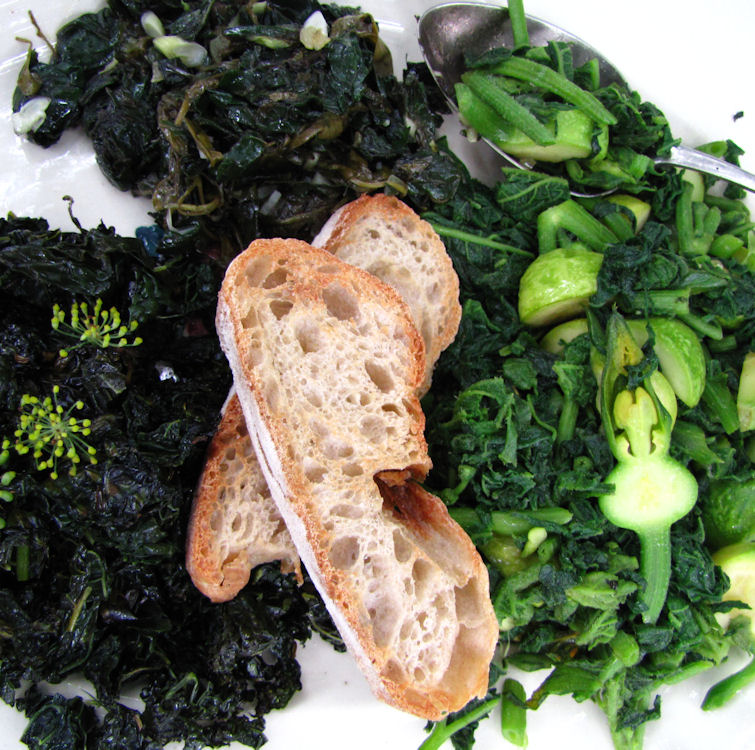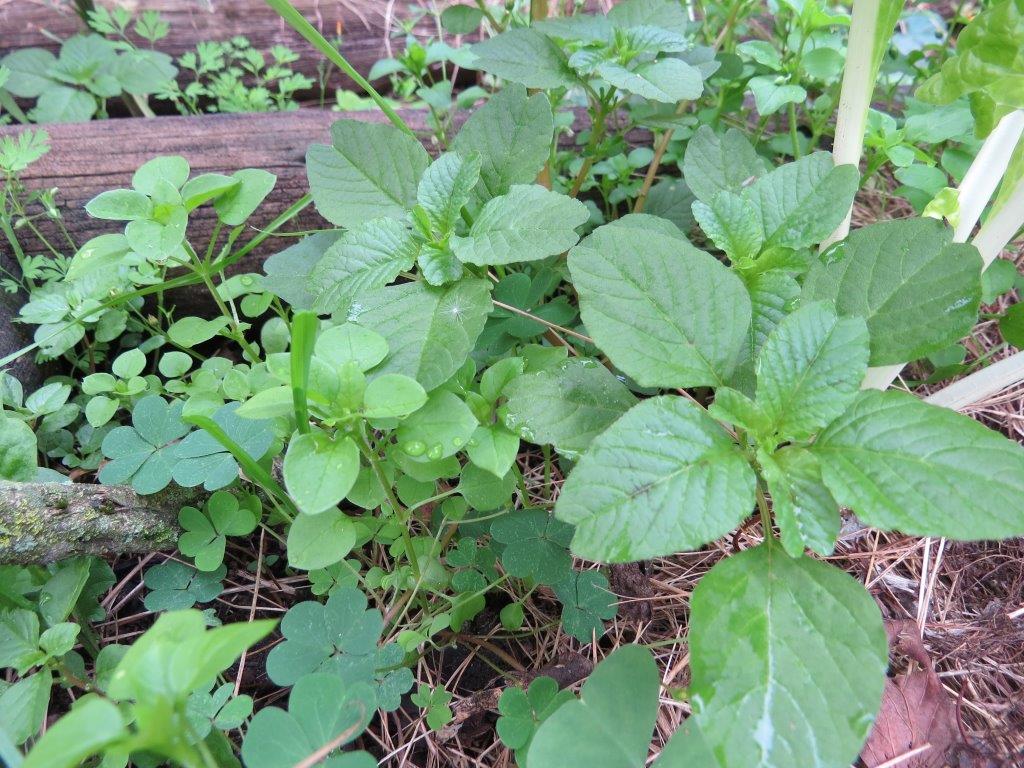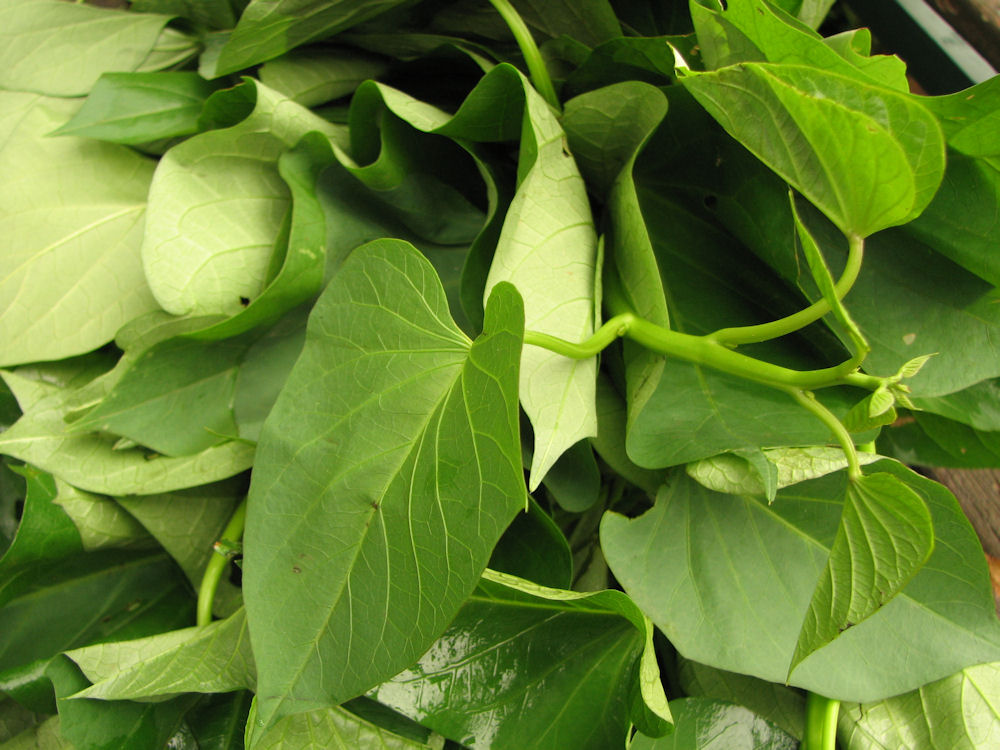Wild Greens are wonderful things. Jam packed with nutrients, often far surpassing that of more commonly eaten leafy greens like Swiss Chard and cabbage. Around here we call them imifino. In other places around South Africa, marog is the common word to describe all manner of leafy greens.
Across the globe, many communities seek out the new growth of wild greens in Spring and Summer. In Italy and Greece there is a frenzy on the hillsides as folk flock to pick the tastiest new leaves. In South Africa it doesn’t have quite the same ‘foodie status’ (yet). I recall a teacher at a rural school in desolate area, where kids were obviously hungry saying, when I pointed out that they should be harvesting the weeds to include in the school dinner, “That is squatter camp food.” I felt really sad that she thought an old cabbage from the supermarket was superior to this dark green food.
I was really excited to read an article in Nature magazine recently that stated that indigenous leafy greens are growing in popularity in East Africa. Now sold in large supermarkets, served in restaurants in Nairobi and Kenyan farmers have increased the area planted with greens by 25% since 2011.
I have learnt the most about imifino from Nombuizelo Nokhoakhoa who lives on the farm. She is from Lesotho and has amazing knowledge of what can be eaten. I am in the process of compiling a recipe book for Mpophomeni and plan to include a section on imifino in an attempt to increase its cool factor. These are my favourites:
Imbuya – Amaranth Amaranthus hybridus
This is one of the most popular greens, it has heaps more Vitamin C than cabbage or chard – just 50g contains 100% of our daily needs. It grows profusely, is versatile and can be used wherever greens are called for in a recipe. Young leaves can be chopped into salad. Both the leaves and the seeds of Imbuya are rich in carbohydrates and proteins. Leaves are frequently dried for winter use. I read somewhere that the leaves have the highest protein content of any vegetable. We should all be planting and eating this vegetable.
Ugobolo (also Amaranthus family) is high in carotenoids and a good source of Zinc (important for children’s development and fighting infection). Plenty to be found in most gardens.
Uqadolo – Black Jack Bidens pilosa Pick only the tender young leaves as they get bitter with age. Packed with Iron, Iodine, Zinc, and a good source of Vitamins A and E. I don’t really like the flavour so I prefer to mix uqadolo other varieties of imifino. You can’t ignore the nutrients.
Imbati – Stinging Nettle Urtica urens Pick young leaves carefully! Nettles are scumptious with potatoes or dried beans and full of vitamin C and A, phosphorus, protein and sulphur. I add them as often as I can to whatever I am cooking.
Umcaleka – Gallant soldier Galinsoga parviflora. Not my favourite, but I do mix young leaves, cooked or raw into food as it is rich in calcium. Usually eaten before it flowers.
Then in the hay fields there is a great variety that comes up every year – generally referred to as qwango which I think is wild turnip Brassica rapa

Isihlalakuhle – Wild mustard Sisymbrium thellungii and Rapistrum rugosum (edible when young). A very easily digested imifino, often cooked with a little onion or milk.
Dupila Sheep Sorrel Rumex acetosella subsp angiocarpus This was Alina Mofokeng’s favourite, but she died last year so I can’t check the spelling. It might be spelt Lupila, as in seSotho ‘L’ is pronounced ‘D’ Interesting tangy sorrel flavour, I am always pleased to find it in my veggie patch.
Nombuizelo’s favourite is Sebitsa Pepperweed Lepidium bonariense. The leaves make a pretty peppery addition to potato salad, or can be cooked as other imifino.
Chickweed Stellaria media – a source of boron and quick growing cover crop. Birds love the seeds. Perfect for salads and juicing. I eat heaps of this as it grows profusely.
Ihlaba lekati – Dandelion Taraxacum officinale Dandelions are particularly rich in minerals, especially iron. Young leaves are fantastic in salads. Perfect Springtime treat. You can also eat bean leaves and sweet potato leaves (silky texture and delicate flavour – below) and pumpkin leaves – all of which I love, but they are not weeds, so I am not writing about them here.
This is free food, delicious and good for you, don’t waste it. Harvest your supper while ‘weeding’ your beds! How about ordering a copy of Mnandi – a taste of Mpophomeni now? It will include all the other imifino that I don’t eat but that you may love!
Book an Edible Weed Experience on AirBnB











Thank you … enjoyed reading about My fields edible weeds. We are in the E Cape. Do u have a booklet for purchase?
LikeLike
Reblogged this on (LAS) ABDUN-NUR.
LikeLike
I’m so glad to have stumbled on your blog while researching wild Amarinth. I live in Cape Town, and wondered, if you have the time, if you or your readers could check out this picture of a local Amarinth growing everywhere in Goodwood through cracks in the pavement, and let me know if its edible or you can ID the species ?
http://www.greenidiom.com/is-this-street-spinach-.html
I would love to connect with you on facebook as I write on similar stuff, though I’m just starting out, been writing since March 2016. Love what you are doing, from hiking to Guerilla gardening.
LikeLike
Hello Nikki I’m very grateful for your article. I have been looking for information on wild Southern African leafy greens as I believe they are more nutricious than foreign ones we’ve become accustomed to. What advice can you give to me (a very inexperienced and passionate gardner) about planting these wonderful plants in my own garden? I’m based in Hibberdene, South Coast of KZN. God bless
LikeLike
Hello Nduduzo – thanks for your enthusiastic comment. I will reply by email.
LikeLike
Im looking to buy a book with all the possible edible weeds in and how to prepare them. any suggestions? I am living in Johannesburg but soon will be moving North into High veld of Transvaal
LikeLike
Hello Daleen, this article lists most of them that I have come across and will be included in our recipe book Mnandi which will be published soon (with others). Best way to learn is from a local who has lived in the area for ever. However, you can order Mnandi if you like – R200 plus postage and packaging R40.
LikeLike
Oh my word Nikki! What have I been weeding out all these years!!! My minerals and vitamins!
LikeLike
oooh nice PR, well done!
LikeLike